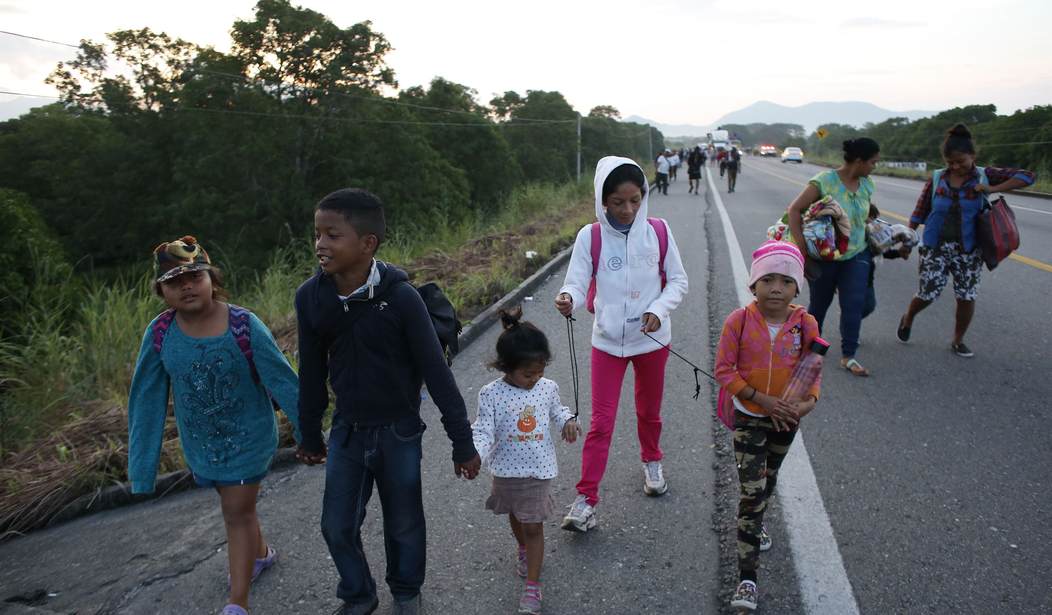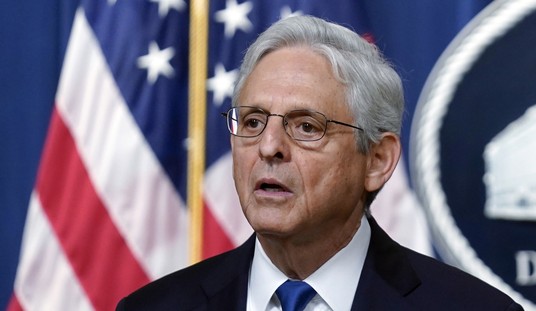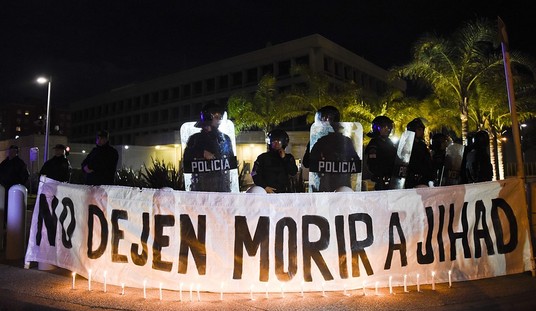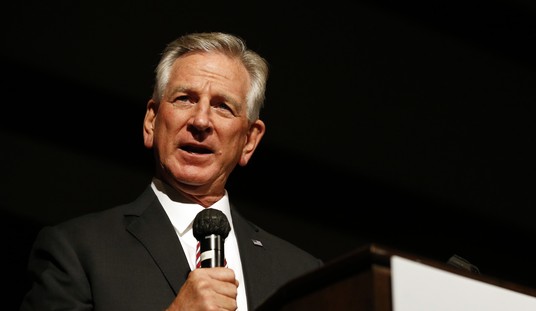The last time we had a crisis with unaccompanied minors at the border was following the Obama administration’s adoption of a “catch and release” policy. The administration adopted this policy to get around the restrictions about how long they could detain a child at the border. From Reuters in 2014:
An estimated 60,000 such children will pour into the United States this year, according to the administration, up from about 6,000 in 2011. Now, Washington is trying to figure out how to pay for their food, housing and transportation once they are taken into custody.
The flow is expected to grow. The number of unaccompanied, undocumented immigrants who are under 18 will likely double in 2015 to nearly 130,000 and cost U.S. taxpayers $2 billion, up from $868 million this year, according to administration estimates.
Now, the Biden administration is facing a similar crisis, despite having already effectively adopted a policy of “catch and release.” The administration’s goal is to process all migrant families and release them within 72 hours. However, with record numbers of children migrating alone, they are not meeting the mandatory release from detention within 72 hours, according to The Washington Post:
More than 8,500 migrant teens and children who crossed the border without their parents are being housed in Department of Health and Human Services shelters as they wait to be placed with relatives or vetted sponsors. Nearly 3,500 more are stuck at Border Patrol stations waiting for beds in those shelters to open up, the highest figure ever, according to internal data reviewed by The Washington Post.
Held in grim steel-and-concrete cells built for adults, these young people are spending an average of 107 hours awaiting transfer to an HHS-run shelter, well over the 72-hour legal limit, the data shows.
If you remember the kids in cages controversy, it bears mentioning that these children are now languishing in jail cells. The Washington Post describes them as “austere holding cells with concrete floors and benches. Lights remain on 24 hours a day… and there are few places to play.”
But at least they can shower every two days and get three square.
White House Press Secretary Jen Psaki said taking these children into custody for placement was the compassionate and moral thing to do. Presumably, this would be the preferable option to returning them to their home countries. While conditions are generally better in the United States than in Central America, it bears remembering what happened when unaccompanied minors flooded the border during the Obama administration.
A 2018 bipartisan Senate investigation found that beginning in 2011, the process for placing children with sponsors and assuring their well-being pretty much fell apart. The analysis focused on Category 3 sponsors, or distant relatives and non-relatives. In these type of placements, the report noted:
HHS commonly places children with alleged distant relatives or family friends without setting eyes on the sponsor or his environment, and even permits the sponsor to bar post-release contact with the child. And until three days ago, HHS policy did not require adequate background checks for other adults living with a would-be sponsor or on the person designated to care for the child in the sponsor’s absence.
It also noted that HHS systems had no way of detecting if a single sponsor has received other unaccompanied migrants or if another adult living at their address had. This behavior is a red flag for human trafficking and precisely what happened in a forced-child-labor case on egg farms in and around Marion, Ohio, that promoted the Senate’s investigation:
The Subcommittee’s initial review of the Marion case files revealed information that suggests these terrible crimes were likely preventable. Specifically, the files reveal that, from June through September 2014, HHS placed a number with alleged distant relatives or family friends—including one of the defendants in the criminal case—without taking sufficient steps to ensure that the placements would be safe. HHS failed to run background checks on the adults in the sponsors’ households as well as secondary caregivers, failed to visit any of the sponsors’ homes; and failed to realize that a group of sponsors was accumulating multiple unrelated children. In August 2014, HHS permitted a sponsor to block a child-welfare case worker from visiting with one of the victims, even after the case worker discovered the child was not living at the address on file with HHS.
Immigration officials were notified in 2011 that smuggled individuals were working at egg farms in Ohio. One recovered victim said there were approximately 20 other children when he was there, and the U.S. attorney in the area said there were undoubtedly more victims.
In addition to the almost non-existent vetting of the sponsors and the home environments, the investigation found a significant number of unaccompanied minors failed to show up at their immigration proceedings. Data showed that 40% of completed cases for these children resulted in a removal order in absentia. At that point, if the children are still in the United States, they are considered illegal immigrants. The report added:
Beyond the Marion case files, the Subcommittee has identified and reviewed 13 other cases involving post-placement trafficking of UACs and 15 additional cases with serious trafficking indicators. The Subcommittee is unable to say, however, with any certainty how many more UACs placed by HHS have been victims of trafficking or other abuses, in part because HHS maintains no regularized means of tracking such cases.
When a child was placed with a Category 3 sponsor, the parents were required to verify the arrangement. This confirmation usually happened over the phone, which had several authentication issues, and in some cases, investigators found the parents were complicit in the smuggling of their child.
In many cases, the investigation found the verification never happened. More astonishing, out of 53,518 children placed with sponsors in the fiscal year 2014, HHS only performed 1,401 home studies. In the placement of foster children in the U.S., where often a child is placed with a non-relative, neglecting to conduct a home study would violate state law. HHS policy at the time also allowed sponsors to refuse post-placement services; these services only ended up being provided in 10% of cases each year.
With 40% of unaccompanied minors never showing up for a hearing and poor follow-up, it is impossible to know the total number of children placed in at-risk situations. The report recommended significant reforms to the placement process with increased after-placement monitoring. These would make the placement process more labor-intensive and time-consuming.
The report notes changes to operations and policies for the placement of unaccompanied minors that were in process at the time the report was released. However, it is essential to note that HHS wasn’t following the procedures it had already defined at the time of the investigation.
Additionally, in 2018, HHS Acting Assistant Secretary Steven Wagner told Congress the administration could not locate 1,475 children who had been placed with sponsors:
HHS placed some 7,635 children with sponsors in the US between October 2017 and the end of the year, according to Mr Wagner’s Senate testimony. When the agency conducted follow-up calls with the sponsors this year, they found that 6,075 of the children remained with their sponsors, 28 had run away, five had been removed from the country, and 52 had relocated to live with a non sponsor.
But the agency couldn’t account for the remaining 1,475 children, sparking headlines about the hundreds of unaccompanied minors HHS had lost.
It is not clear that anything substantial had changed by 2018 in terms of the government’s ability to place and follow up with unaccompanied children effectively. One has to wonder why Psaki thinks it will be more “humane” this time. Children are already sitting in jail cells—on concrete and under bright lights.
President Biden’s Southern Border Coordinator Roberta Jackson said the border situation had the administration trying to “walk and chew gum at the same time” at a recent press conference. Given the previous two administrations’ track records with unaccompanied minors, it does not bode well for the children in their care.










Join the conversation as a VIP Member